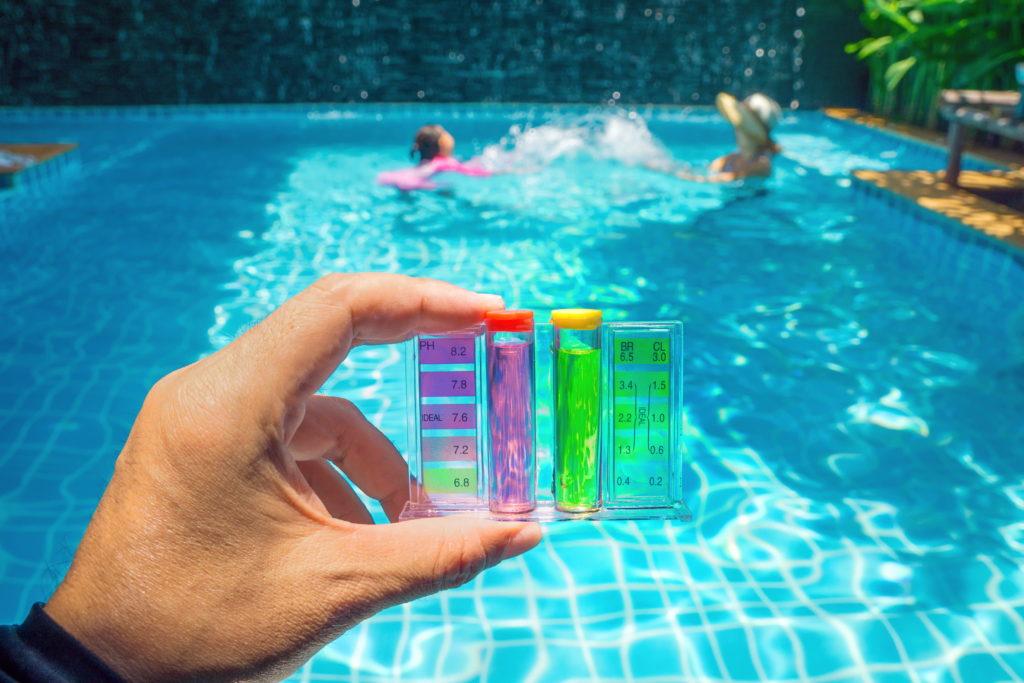A Brief Dip into Proper Pool Maintenance—and What to Do with All that Water
June 29, 2021

Southern California is awash in swimming pools: More than a quarter of a million sparkling blue oases dot the landscape from Santa Barbara to San Diego and everywhere in between.
Swimming pools offer good, clean, irresistible fun, but they do not come without certain responsibilities and considerations for downstream waters and wildlife. Water that flows into our storm drains is not treated, which includes chemicals used in pool water and that become pollutants in the environment. Many pools are plumbed to allow drainage directly to the sanitary sewer. However, no matter where that water goes, this blog provides important instructions for proper pool management and maintenance.
Beyond the Splash Zone
No matter the kind of pool you have, they all have the potential to pollute waters beyond the splash zone. If contaminated pool water enters the storm drain system, aquatic life, marine environments, and water quality can be harmed. If you must drain pool water into the storm drain (and it’s legal in your municipality), the water should be tested to ensure there are no metals, chlorine, or pH issues.
In addition to draining pool water, leaks can also contribute to runoff pollution. Keeping close tabs on pH levels and water hardness is critical to minimizing corrosion of copper pipes and possible leakage. Copper is a dangerous pollutant for fish and other aquatic life, and pool owners must do their part to prevent this damage. Additionally, pool filter sand and fine particles can deposit on the gravel of streams, preventing oxygen from reaching buried fish eggs or clogging fish gills. If your pool needs acid cleaning, contact a licensed professional to ensure it is conducted properly.
Pool maintenance practices can negatively impact water quality as well if not performed properly. Preventing algae problems is done through regular cleaning, consistent and adequate chlorine or sodium bromide levels, and well-maintained filtration and circulation systems, but these require careful thought and practice. Pool filters should be rinsed in landscaped areas where water and debris can readily soak back into the soil. Likewise with diatomaceous earth (DE) filters. Spent DE should be tossed in with solid garbage, never discharged into storm drains, or any place where it may wash into streams, rivers, or the ocean.
If you experience a non-liquid pool chemical spill, sweep it up, then dispose of it as solid waste. For liquid spills, apply an absorbent like cat litter first, then dispose of it as solid waste. Never wash spilled chemicals into the storm drain.
You would never dump pool chemicals into the ocean, so don’t let those chemicals into our storm drains.
Pools Not Connected to Sanitary Sewers

In some localities, but not all, pool and spa water that cannot be disposed of via a sanitary sewer may be diverted into the storm drain system if it meets certain criteria:
- It is dechlorinated, with residual chlorine levels of 0.1 mg/1 (parts per million) or less
- The pH is between 6.5 and 8.5
- The water is free of any unusual coloration, dirt or algae
- There is no discharge of filter media
- There is no discharge of acid cleaning wastes
Most municipalities have clear guidelines and often require a permit to properly discharge pool, spa, or fountain water so it’s important to consult with local ordinances. Think of it this way, you would never dump pool chemicals into the ocean, so don’t let those chemicals into our storm drains. Visit our H2OC Cities page to connect with your city and look up ordinance regarding pool water discharge.
Follow these rules and guidelines and everything will go swimmingly, for you and for our water resources downstream.
Visit our Pool Care page to learn more.